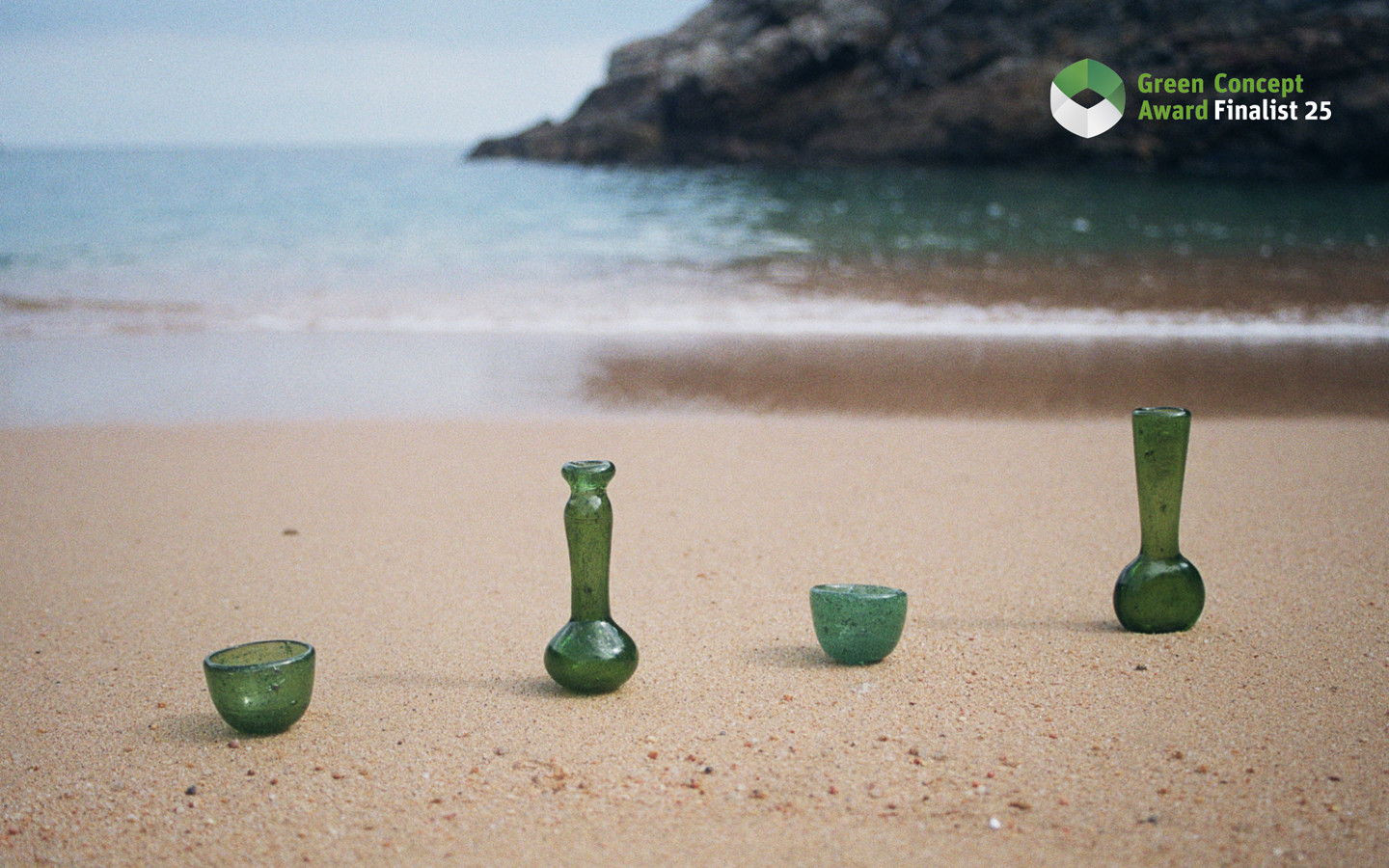Sea Glass
A carbon-capturing glass made from microalgae.
Sea glass is made from a type of microalgae that extracts silicon dioxide from the surrounding water, precipitating it into silica cell walls. Silica, the primary component of glass, is typically sourced from sand. By growing silica instead of extracting it, we can reduce reliance on environmentally destructive sand mining and capture substantial amounts of CO₂ through the algae’s photosynthesis. After extensive scientific and material research, Sea glass was created. Made from 90% microalgae-derived silica, it retains traditional glass properties while requiring less energy to melt.
Company/Institution
elisava
Design and engineering to impact people, society and the planet. At Elisava we train designers with a creative profile, critical thinking and an exploratory vision of the world, capable of questioning and conversing with other people in the social, productive, scientific or cultural environment. Our students will be trained to design products, services and environments that foster a more inclusive and sustainable society.

Country
Spain
Designer(s)
Paolina Kühr

Paolina Kühr is a Paris-born material designer and researcher exploring the symbiotic potential between natural ecosystems and human innovation. After studying biology at Freie Universität Berlin and University of Milan, an internship in bacterial-cellulose leather sparked her interest in bio-based materials. She later pursued a Master’s in Design through New Materials at Elisava in Barcelona, founding Orsa Studio to reimagine materiality with nature. Her research focuses on microalgae-derived glass, aiming to create carbon-negative materials that support ecological resilience.


